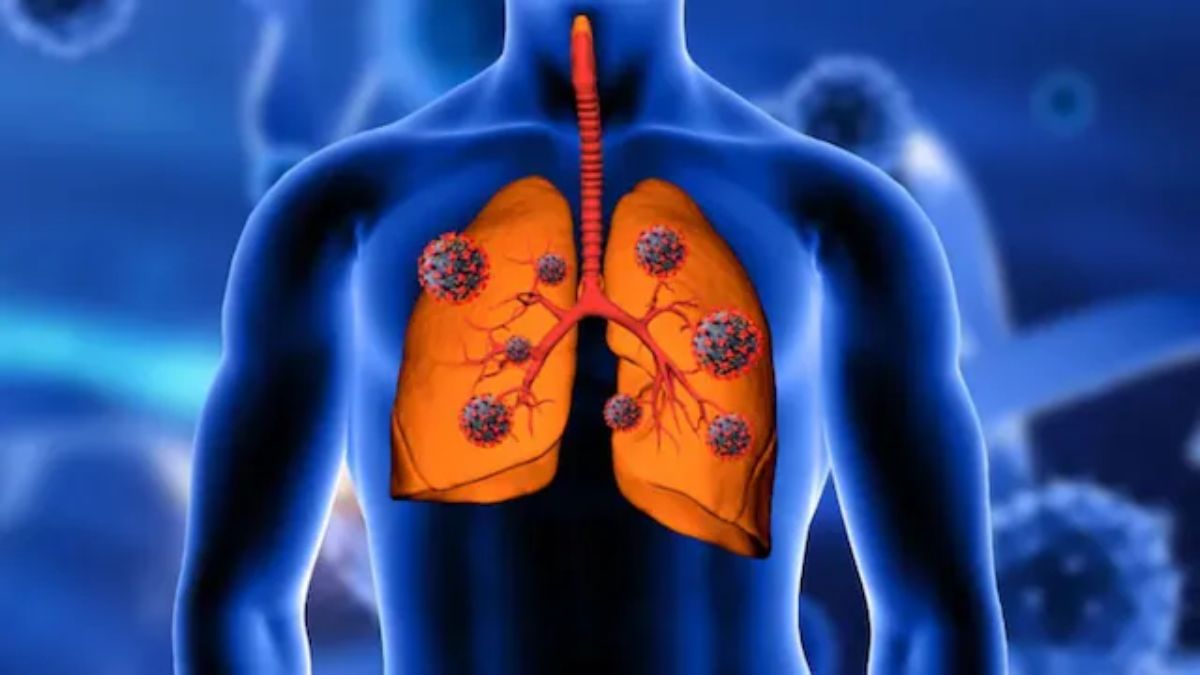Today is World Cancer Day. And, it becomes even more important to raise awareness about lung cancer – one of the most prevalent forms of the disease.
A recent study has found a rise in lung cancer cases among individuals who have never smoked.
ALSO READ |
Why respiratory health matters more than ever
What is causing this increase?
Air pollution has been identified as a major factor behind the growing number of cases.
According to the International Agency for Research on Cancer (IARC), lung cancer in non-smokers is now the fifth leading cause of cancer-related deaths worldwide.
Here’s a deeper look at the issue:
Why lung cancer is no longer just a smoker’s disease
Lung cancer among those who have never smoked is increasingly being diagnosed as adenocarcinoma, which has now become the most prevalent of the four main lung cancer subtypes in both men and women worldwide, according to the International Agency for Research on Cancer (IARC).
A study by IARC, published in The Lancet Respiratory Medicine, revealed that in 2022, around 200,000 cases of adenocarcinoma were linked to air pollution exposure.
Researchers from IARC, the World Health Organisation, and other institutions analysed data, including figures from the Global Cancer Observatory 2022 dataset, to estimate national-level lung cancer cases across four subtypes – adenocarcinoma, squamous cell carcinoma, small-cell carcinoma, and large-cell carcinoma.
Their findings indicate that adenocarcinoma, a cancer that originates in glands producing fluids like mucus and digestive enzymes, has become the leading subtype in both men and women.
In 2022, this subtype was responsible for 53-70 per cent of lung cancer cases among non-smokers globally.
ALSO READ |
World Cancer Day: How the global cancer burden is rising rapidly
Unlike other forms of lung cancer, adenocarcinoma has a weaker association with cigarette smoking, researchers added.
They wrote, “As smoking prevalence continues to decline in many countries worldwide, the proportion of lung cancer in people who have never smoked has increased.”
Lead author Freddie Bray, head of IARC’s cancer surveillance branch, wrote, “Changes in smoking patterns and exposure to air pollution are among the main determinants of the changing risk profile of lung cancer incidence by subtype that we see today.”
Dr Pankaj Chaturvedi, Director of the Advanced Centre for Treatment, Research and Education in Cancer (ACTREC) at Tata Memorial Centre, Mumbai, told The Indian Express, “This rising burden of lung cancer is an area of concern as the resultant loss of lives is largely preventable.”
Factors causing rise in lung cancer cases among women
Research suggests that genetic variations may make some women more vulnerable to lung cancer, even if they have never smoked. Also, hormonal fluctuations, particularly during menopause, could contribute to an increased risk, The Indian Express said in a report.
ALSO READ |
Humans of Bombay CEO Karishma Mehta freezes her eggs: Why is it becoming popular among young women?
Environmental pollution also plays a major role. Indoor exposure to radon gas and outdoor exposure to PM2.5 particles can alter DNA, affecting cell division and leading to cancer, the report said. In developing countries, prolonged exposure to cooking fumes from burning wood or frying has been linked to a higher incidence of lung cancer.
Experts said that historical smoking patterns also contribute to the trend. Since smoking rates peaked earlier in men than in women, there is now a growing awareness that women should be as vigilant about lung cancer symptoms as they are about breast cancer, The Guardian reported.
Lung cancer remains the leading cause of cancer-related deaths globally.
However, “lung cancer in people who have never smoked is estimated to be the fifth leading cause of cancer-related mortality worldwide, occurring almost exclusively as adenocarcinoma and most commonly in women and Asian populations,” the authors wrote.
“In 2022, we estimated that there were 908,630 new cases of lung cancer worldwide among female individuals, of which 541,971 (59.7 per cent) were adenocarcinoma,” they added.
Among the women diagnosed with adenocarcinoma, 80,378 cases in 2022 were linked to ambient particulate matter (PM) pollution.
“The diverging trends by sex in recent generations offer insights to cancer prevention specialists and policy-makers seeking to develop and implement tobacco and air pollution control strategies tailored to high-risk populations,” said lead author Freddie Bray.
According to 2019 data, almost everyone worldwide is estimated to be living in areas that fail to meet the WHO’s air quality standards.
Symptoms of lung cancer
Lung cancer symptoms can vary from person to person. Some individuals experience lung-related symptoms, while others may have signs linked to the spread of cancer in different parts of the body.
In some cases, general feelings of illness are the only indication, according to the US Centers for Disease Control and Prevention (CDC).
People can have different symptoms for lung cancer. Some people have symptoms related to the lungs. Some people whose lung cancer has spread to other parts of the body have symptoms specific to that part of the body. Some people just have general symptoms of not feeling well, according to US’ Centers for Disease Control and Prevention (CDC).
Common symptoms include:
How to reduce the risk of lung cancer
While some risk factors for cancer can be controlled, others cannot. For instance, smoking and genetic inheritance both contribute to cancer risk, but only smoking can be avoided. Regular physical activity and a balanced diet may offer some protection against certain cancers.
However, lowering risk factors does not guarantee that cancer will not develop, according to the US National Cancer Institute.
Steps to reduce lung cancer risk:
-
Avoid smoking: The most effective way to prevent lung cancer is to never start smoking. If you smoke, quitting can significantly reduce your risk.
-
Stay away from secondhand smoke: Exposure to smoke from others’ cigarettes, cigars, or pipes can also increase lung cancer risk. Keeping your home and car smoke-free is essential.
-
Reduce radon exposure: Test your home for radon, a naturally occurring gas that can seep into buildings, and take necessary steps to lower its levels if needed.
With inputs from agencies

)




